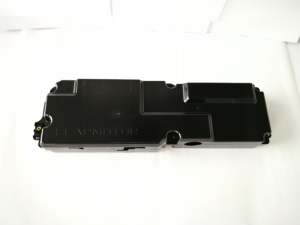Design for Manufacturability (DFM)
1. Enhancing Product QualityDFM focuses on designing products that are easy to manufacture with minimal complications. By considering the limitations and capabilities of manufacturing processes during the design phase, potential defects and quality issues can be anticipated and mitigated. This proactive approach ensures that the final product meets high-quality standards consistently, a critical factor for any injection molding company.
2. Cost Reduction
A primary objective of DFM is to minimize manufacturing costs. This involves optimizing the design to reduce material usage, simplify assembly, and eliminate unnecessary complexities. Streamlined designs lead to more efficient production processes, lower material costs, and reduced labor expenses, all contributing to significant cost savings. For an injection mold maker or injection tooling supplier, these cost savings can enhance competitiveness in the marketplace.
3. Facilitating Efficient Production
DFM fosters collaboration between design and manufacturing teams, ensuring that designs are practical and manufacturable. This collaboration helps in creating designs that align with manufacturing capabilities, reducing the likelihood of production delays and inefficiencies. Efficient production processes translate to faster turnaround times and quicker time-to-market, a crucial advantage for any injection molding company aiming to stay ahead of the competition.
Mold Flow Analysis
1. Predicting Potential DefectsMold Flow Analysis uses simulation software to model the flow of molten plastic within the mold cavity. This analysis helps predict potential defects such as air traps, weld lines, warpage, and sink marks. By identifying these issues early, corrective measures can be implemented before the mold is built, preventing costly rework and ensuring higher quality parts. This is particularly important for a Chinese injection mold maker, who may be working with international clients that demand high-quality standards.
2. Optimizing Mold Design
The insights gained from Mold Flow Analysis are critical for optimizing mold design. Engineers can determine the best locations for gates, runners, and cooling channels, ensuring even filling and cooling of the mold. This optimization leads to improved part quality, reduced cycle times, and extended mold life. An injection tooling supplier benefits greatly from such optimizations, as they lead to more reliable and efficient tooling solutions.
3. Improving Material Efficiency
Mold Flow Analysis helps in selecting appropriate materials and processing parameters. Understanding how different materials behave during injection molding allows engineers to choose the best material for the application, balancing performance and cost. This improves material efficiency, reduces waste, and enhances overall product performance, which is advantageous for any injection molding company focused on sustainability and cost-effectiveness.
The Synergy of DFM and Mold Flow Analysis
When integrated into the early stages of product development, DFM and Mold Flow Analysis work synergistically to amplify their individual benefits. Here’s how they complement each other:- Shortening Development Cycles: By addressing potential manufacturing and mold design issues early, the need for multiple design iterations and mold modifications is minimized, leading to shorter development cycles.
- Reducing Time-to-Market: Streamlined design and manufacturing processes enable quicker production ramp-up, allowing products to reach the market faster.
- Ensuring Higher Customer Satisfaction: Products that meet high-quality standards and are delivered on time contribute to higher customer satisfaction and loyalty.
Conclusion
In the competitive field of injection molding, the importance of DFM and Mold Flow Analysis cannot be overstated. These methodologies are essential components of a robust product development strategy. By implementing DFM and Mold Flow Analysis before injection mold design, manufacturers can achieve superior product quality, cost savings, and operational efficiency. For an injection mold maker, a Chinese injection mold maker, or an injection tooling supplier, these practices are crucial in driving business success and gaining a competitive edge in the market.












 +1 270-282-2096
+1 270-282-2096
